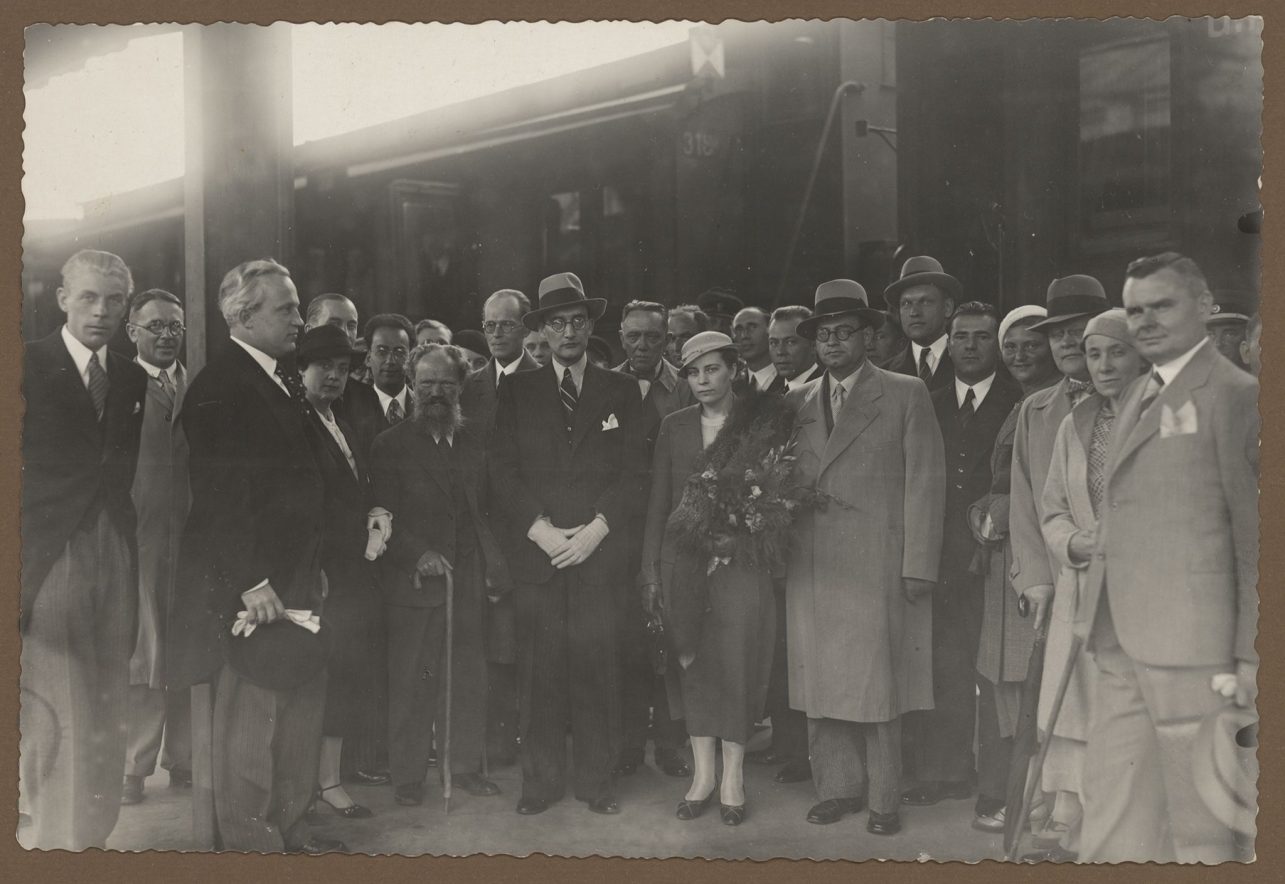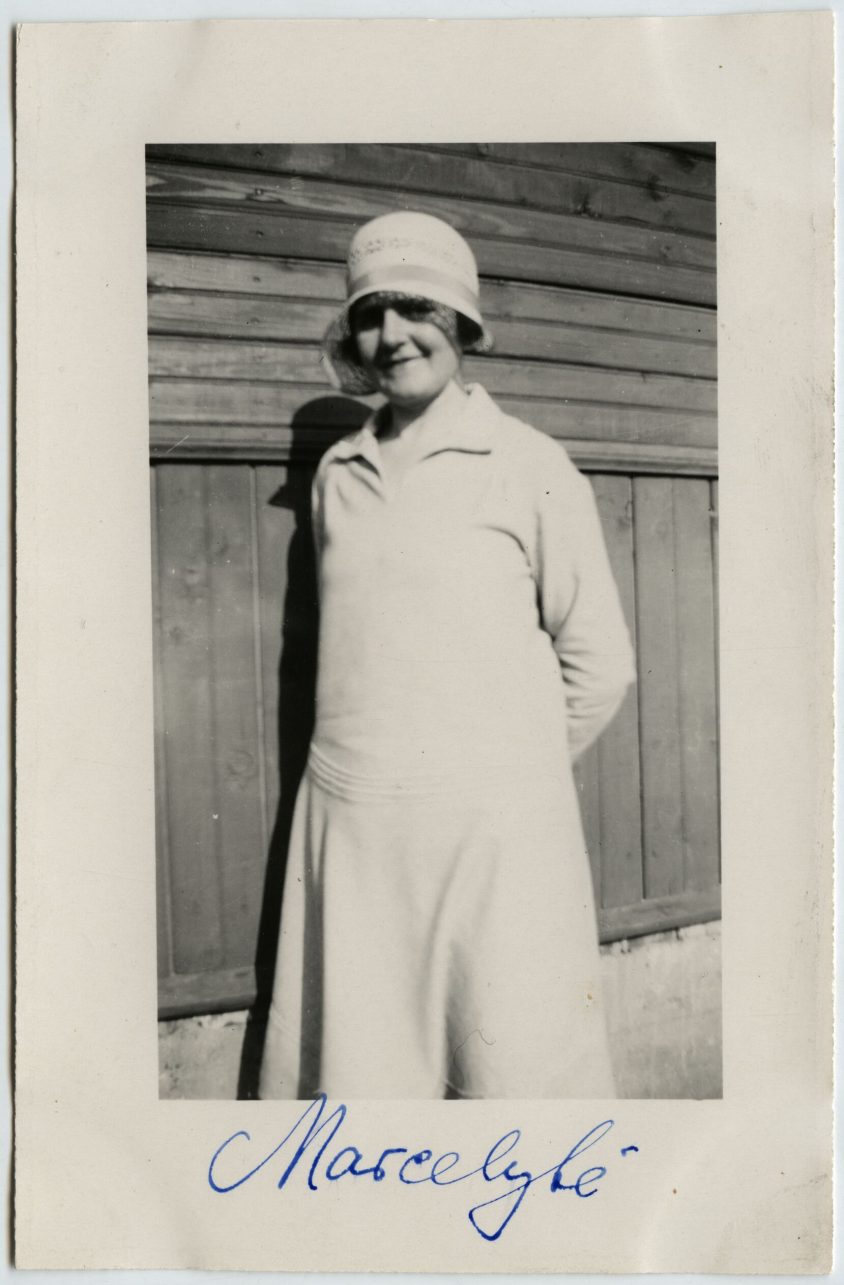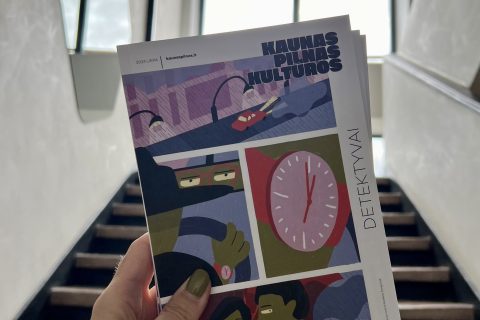When you write for a magazine, you get to know people worthy of a film, and when preparing for interviews, you manage to remember what has been forgotten or learn something new. When I was a teenager, I saw Casablanca – one of the most famous films ever made – and dreamed of becoming part of the film industry. I never did and wouldn’t call myself a cinephile anymore but watching a forgotten movie to get to know my beloved city of Kaunas better, is a real pleasure. After the screening, I went to talk to two people – the souls of the Sugihara House Museum on Vaižganto Street – Dr. Linas Venclauskas and Ramūnas Janulaitis. A little earlier, they presented an exhibition that describes Kaunas as the Casablanca of the North.

What is the Casablanca of the North?
I don’t like when such unequal comparisons like, “Kaunas is the little Paris” or “Marijus Žiedas is the Lithuanian Pierce Brosnan”, are used. Sometimes they simply don’t convey anything and just create an illusion of a forced similarity. But this time, I have no reason to be upset. If it weren’t for the aforementioned movie, I would probably have learned about the Moroccan city much later in my life. The film, released during the war years, became a real cliché of popular culture, used to describe certain tense, multilayered situations.
The 1942 American romantic drama intertwines elements that were abundant in Kaunas: changing political regimes, refugees, spy games, heartaches, an exotic atmosphere, the margins of 20th-century history, battles against totalitarianism, and more. The situation in Kaunas was complicated, and the love triangle in the film was no less treacherous: just as the lovers’ fates diverge in the movie, so do they scatter in Lithuania. Between East and West, between home and gulags, between different sides of the Iron Curtain, between life and death.
The roots of the term
The first to use the term “Casablanca of the North” was Professor Egidijus Aleksandravičius of Vytautas Magnus University, describing Lithuania’s grandeur as it plunged into the abyss during the fateful autumn of 1939. In September, Poland was divided by two evil empires, and we were forced to sign a mutual assistance pact with a country whose name I dislike.
The historians remind me during our conversation: although Vilnius was ours, we were under Russian control, as Pupų Dėdė said. However, officially, Lithuania was not yet incorporated into the evil empire; only military units were stationed. Amid the wartime atmosphere, foreign embassies from countries like Germany, the USSR, Poland, France, Great Britain, Japan, and others still operated here.
A relatively large number of refugees flock to Lithuania: mostly Jews from Germany and Poland. While some other countries, avoiding anti-Semitic sentiments, closed their borders, we accepted about 30,000 people.
Spy games
Representatives of foreign countries began settling in the small, cozy, and still provincial Kaunas in 1920, ranging from extraordinary and plenipotentiary ministers to honorary consuls and even apostolic nuncios. According to the diplomatic practices of those times, only representatives of major states could be called ambassadors.
R. Janulaitis acknowledges that Lithuania, specifically Kaunas, was not a key point in the diplomatic network during the dawn of independence. One representative was often assigned to several countries, so the permanent residences of those countries’ envoys were usually in Riga, Stockholm, Copenhagen, and Helsinki.
Foreign diplomats of significant ranks would visit Kaunas on occasions such as presenting credentials, national holidays, or important diplomatic missions. In their stead, they were usually represented by lower-ranking colleagues who handled visas and other matters.
“In the past, as well as now, foreign embassies had two functions: the official, protocol ones that we know, follow, and regulate quite strictly between states, dealing with various matters of cooperation. But there are always unofficial, intelligence functions aimed at gathering missing information,” L. Venclauskas explains.
Before the war, 22 foreign countries had established embassies in Kaunas. Each had different tasks and responsibilities. From the remaining documents and memories, we know that, for example, the Russians paid a lot of attention to representation, wanting to project an image of prestige and a progressive country. Among other things, they also engaged in espionage.
Kaunas becomes a zone of significant interest – a Casablanca of the North – before the war. A real cauldron of spies gets to a boil in a small but still independent country. Major European players vie for influence, a refugee crisis emerges, and there are various attempts to sway the local population. The situation is well illustrated by the fact that even with the scent of war in the air, different countries continue to send their representatives here. The high-ranking Vice-Consul Chiune Sugihara arrived in Kaunas in August 1939, and a new Swedish representative arrived in the summer of 1940. Both their workplaces were almost directly across from each other on Vaižganto Street. My interviewees speculate that such a peculiar location (then on the edge of the city) was likely chosen intentionally. It was away from prying eyes, more private, and more convenient for a quick escape.
Did Lithuania have spies?
Of course. According to the original project, all state institutions were to be established in the capital city of Vilnius, but after the conquest of Eastern Lithuania by the Poles in 1920, the Ministry of Foreign Affairs of the Republic of Lithuania is slowly being established. It later worked closely with the Department of State Security.
In Kaunas, the Ministry of Foreign Affairs changed its location several times. First, it settles in what we now know as Valdas Adamkus library-museum and later moves to the upper floors or the KTU main building. Before the war, 75 diplomats and civil servants worked here. The ministry was led the longest by Dovas Zaunius and Stasys Lozoraitis.
L. Venclauskas mentions perhaps the most prominent Lithuanian spy or intelligence pioneer, Jonas Polovinskas, nicknamed Budrys, as an exceptionally unique and myth-laden personality of interwar period Lithuania (his memoirs inspired not only Bernardas Gailius, discussed in this issue but also Canadian Lithuanian writer Antanas Šileika, whose texts also vividly describe Kaunas, ed.). Among his most notable missions was the successful covert operation in the Klaipėda Region and its retrieval.
A well-educated officer from a prominent family returned to Lithuania and on July 21, 1921, and was appointed head of the Counterintelligence Section of the Intelligence Department at the Lithuanian Armed Forces. Later, he held several important diplomatic posts for Lithuania abroad: in Königsberg, East Prussia, and the USA.
There were women in the Casablanca of the North but not all of them entered the history pages written by men. The only woman who held a high position in the Ministry of Foreign Affairs was Magdalena Avietenaitė, and the most famous female intelligence officer in Lithuania at the time was Marcelė Kubiliūtė. Avietėnaitė, who studied and worked in Vilnius, fell in love with the city and never forgot it: after the occupation of our capital by the Poles, she actively passed over press, and money, and collected information about the Polish army to the remaining Lithuanians for almost two decades.

Not coincidentally: before Kaunas became the Casablanca of the North, the most active espionage game took place between Lithuania and Poland. Until 1940, 138 people were convicted of espionage for Poland. The highest punishment imposed was death, but there were cases when A. Smetona showed leniency.
Meeting places and notable figures
Undoubtedly, the main headquarters for espionage activities were the foreign embassies and their offices, many of which were located on V. Putvinskio (formerly Kalnų) Street. Before the war, new buildings were erected near the end of Laisvės Avenue, close to the steps leading to Vytautas Hill, housing the Soviet Union’s representation.
Could there have been any other places where spies could gather? Linas Venclauskas confirms an answer that I somewhat expected: Metropolis restaurant could indeed have been such a place where information was exchanged and sought after.
One of the most popular entertainment spots in Kaunas at that time attracted quite a few middle and upper-class Lithuanians, mostly state officials and military officers. It’s worth noting that the mood in the young state was particularly hedonistic: there was no shortage of festivities, alcohol, or even drugs. I even read somewhere that intravenous cocaine and ether were popularly consumed.
But were there any notable figures who could have been spies? During the interwar period, there were suspicions that one such person was perhaps the most famous singer of that time, Danielius Dolskis, who began his career in Russia. He often appeared in the same Metropolis and was known for his charisma and unique social skills.
The musicologist Vytautas Venckus wrote about the suspicions in his memoirs; Antanas Šabaniauskas had also mentioned it. The other side always denied them. During long discussions, Prof. Markas Petuchauskas assured me that this is just a myth of jealous singers and anti-Semitic Lithuanians. I also thought so, until recently I managed to find data that confirms that Danielius Dolskis was recruited by the Soviet Union. Such individuals were possibly agents of influence, used as mailboxes or as mediums for brainwashing, transmission belts of disorientation.
A traveling singer is a great cover. By the way, he arrived here for the first time immediately after the coup d’état and later became close friends with K. Grinius’ circle. Of course, he maintained a very close relationship with the Gelpern family, who’s youngest Dimitrijus was later saved by K. Grinius from the Holocaust.
The legacy of the twilight of independence
The unique and immensely interesting phase of Lithuanian history, the end of independence against the backdrop of foreign intelligence agents, is being discussed more and more often. That’s great because it is an excellent tool for Lithuania to present itself through yet another behind-the-scenes of history.
Spy films never lose their audience; the games played in the shadows continue to intrigue people. The Casablanca of the North is not just an exhibition but a phenomenon, a Lithuanian detective story whose multi-layered complexity and dramatic experiences surpass James Bond scenarios and rival the legendary novels of John le Carré. Those interested should visit the Sugihara House Museum, where, thanks to its hosts, we can learn more about all this.




